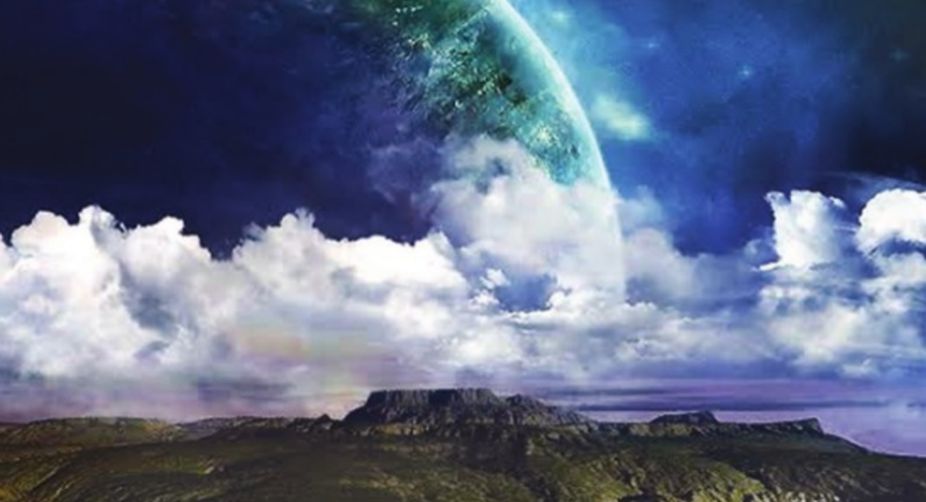History has recorded how Ashoka (304 BC-232 BC), arguably
the greatest of India’s emperors, thrice offered the
country to the Buddhist Church and as many times redeemed the pledge with his
treasure and jewels.
The lamas, however, are more generous than Ashoka because
every day each of them offers to Buddhism’s pantheon
not only the whole of India but the entire universe, inclusive of the heavens
and their inhabitants. Although this is done in effigy, or through a pictorial
depiction, the offering is considered no less effective than were it actually
made in reality.
Advertisement
To render this theory intelligible, we must refer to the
lamaic ideas of the cosmogony of the universe. Therein lies a spellbinding
theory of the universe that was perceived in an earlier millennia. The
universe, according to sages and monks at the time of the Buddha, was closely
followed by Hindu notions on the subject. The concept of the universe was
graphically depicted and reflected in the chart depicted herein.
The system of worlds, of which there are many, forming one
universe consists of a series of continents, all described as fabulous and
magnificent, that are circularly disposed around the great central mass, Mount
Meru, which supports the heavens and which is separated from the circle of
continents by seven concentric oceans alternating with seven concentric whorls,
or, again, concentric circles, of golden mountains, and the whole system is
girdled externally by an iron wall 312 miles high and 3,602,625 miles in
circumference, which shuts in the light of the sun, moon and stars. Outside
this wall is perpetual darkness until another universe is reached.
The primary support of each universe is a channel of blue
air upon which rests the body of the waters and in this latter ocean are set
the continents with bases of solid gold and beneath the central Mt Meru are the
Hells. Mt Meru is a sacred mountain in Hindu and Buddhist cosmology, considered
to be the centre of the geographical world.
The mountain is referred to in the Puranas and Buddhist
texts. Measurements during those ancient times were immense but, amazingly, the
ancient Tibetan measure, a d pagtshad, seemed to correspond with the Indian
unit of measure translated as a Yojana in the Ceylonese scriptures. Mt Meru
towered 80,000 miles above the ocean and extended the same distance below the
waters. Enveloping Mt Meru is an enchanted ocean (rol wai mtsho) of 80,000
miles in width and the same in depth.
This is followed by a wall of golden mountains named the
Track of the Neck-Yoke, 40,000 miles high and wide, beyond which lies the
enchanted ocean of similar dimensions of gradually diminishing dimensions,
bringing us to the continents in the outer ocean. These continents are really
worlds and under the heading Jambuling (Sanskrit, Jambudwip) is included the
whole known world, both Oriental and Occidental. All the other continents are
purely fabulous, as in Hindu mythology.
The chief continents are four in number, with one being
situated in each of the four directions, and each continent has a smaller
satellite on either side, thus bringing the total to 12.
The descriptions of these continents and their people have
been articulated by sages and lamas who have attributed a fascinating effect by
the following depiction: on the East is Lus-hpags or vast body, which is shaped
like a crescent moon and is white in colour. The East is specified as 9,000
miles in diameter and its inhabitants are tranquil and of excellent conduct,
with faces of same shape as this continent, ie, crescent-shaped, like the moon.
On the South is Jambuling, or our own world. It is shaped
like the shoulder blade of a sheep and is blue in colour. This continent is the
smallest of all, being only 7,000 miles in diameter. Here are found riches in
abundance, but also acts of sin as well as virtue. The inhabitants have faces
of the same shape as the continent, ie, sub-triangular. On the West is ba-glang
spyod (Sanskrit, Wealth of Oxen), which in shape is like the sun and red in
colour. It is 8,000 miles in diameter and its inhabitants are extremely
powerful, believed to be especially addicted to eating beef, and their faces
are round, like the sun.
On the North is the sgra-mi-snyan (Sanskrit, Uttaru Kuru or
Elevated Kuru tribe) of square shape and green in colour, being the largest of
all continents and 10,000 miles in diameter. It has fierce and noisy
inhabitants who live in trees and eventually become tree spirits. The trees
then emit ghostly sounds as though they are possessed by supernatural forces
and this is evident by prevailing legends. The satellite continents resemble
the parent one in shape but half in size.
The left satellite of Jambuling is described as the fabulous
country of the Rakshas, the abode of Padma Sambhava, who is believed to still
reign there in glory. The latter satellites towards Mt Meru include the
Mountain of Jewels, The wish-granting tree, (dpag-bsam kyi shing), the
wish-granting cow (hdod-hzo-iba) and the Self-sprung crops (ma-smos-pi
lo-thog), already referred to as living objects in The Cycle of Existence. Mt
Meru is absolute, the King of Mountains, composed of jewels of silver, jasper
stone, rubies and gold, in its four respective directions.
It has four lower compartments before the heavens are
reached and at one level are the sensuous heavens of Indra, above which is the
abode of Brahma; and above all these lies the God of Gods, the Primordial
Buddha Kuntuzang-po (Sanskrit, Samantabhadra) or The Best of All, or The
Supreme. Inhabiting the air, on a level of Indra’s heaven, is a circle of The
Eight Goddesses, the Matris of the earlier Hindus. In the centre of Indras abode is a store of the entire treasure of the gods that
includes a vase for storing all the riches of the different worlds. Tibetan
Buddhists recite prayers to a goddess, Dolma, which is repeated on a rosary 108
times, with the powerful incantation, Om! Tare
The following excerpt of a prayer to Dolma mentions Indra,
thus illustrating Hindu gods in worship, articulated in Buddhist prayers. This
is evocative of the harmony that has existed between the two faiths for more
than 2,000 years: Hail! Dolma! Thou ever ready heroine! Born like a lightning flash,
from the pitying tear/Hail! Thou teacher of Indra,/We adore thee!
— Deepak Rikhye











